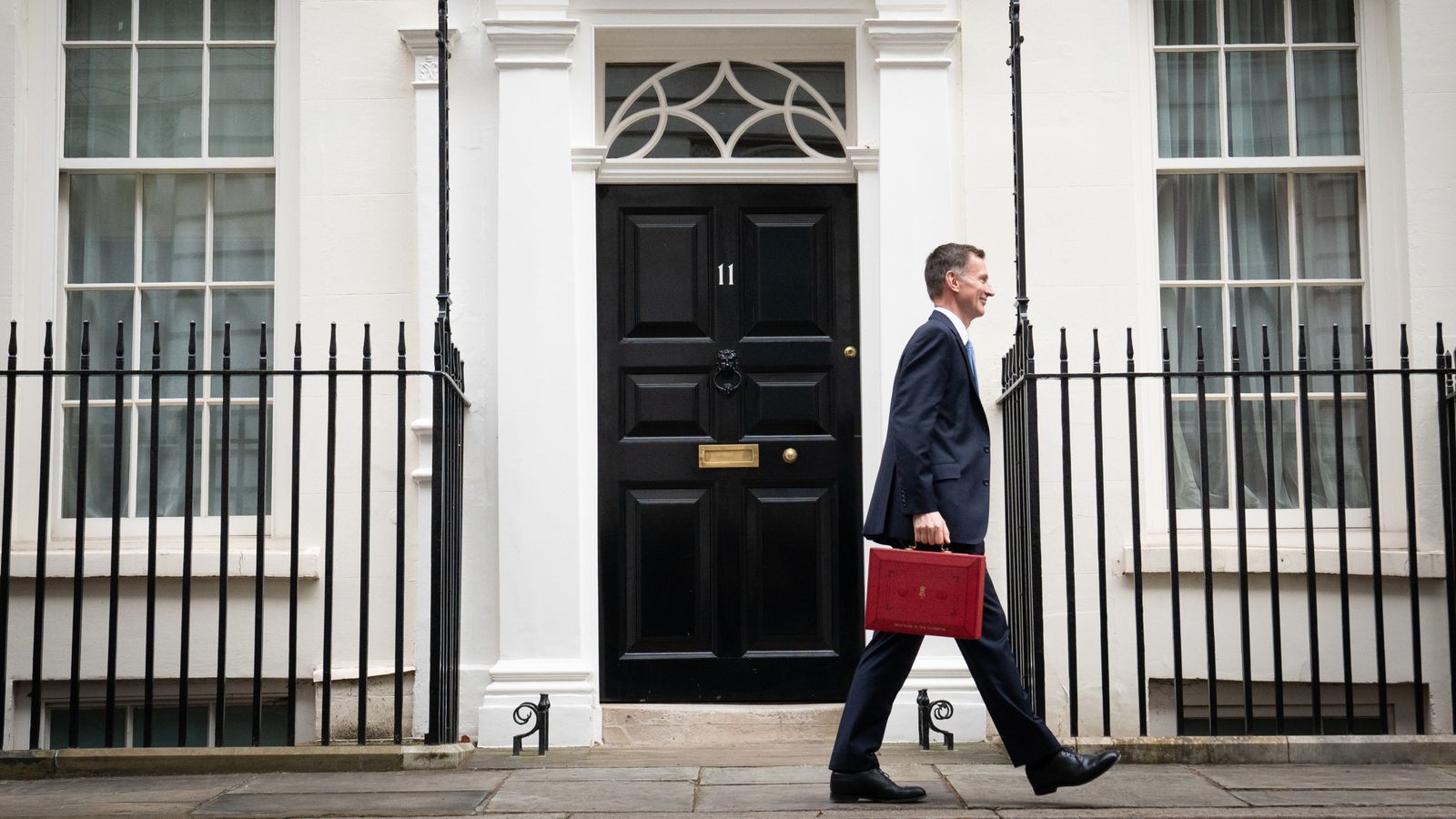High inflation and rising interest rates are wreaking havoc on Britain’s public finances. It’s a warning that the chancellor and the prime minister repeat every time they call for restraint on public sector pay.
It often comes with a reminder that inflation is a global problem: its rapid ascent was largely out of our hands (though the government will nevertheless take credit if it is halved by the end of the year).
It is true that rising interest rates are having a pernicious impact on economies across the world, but the fallout is not uniform.
Britain is suffering more acutely than other advanced economies, partly because of the way we have financed our borrowing.
These structural features have made us more vulnerable to rising interest rates than our G7 peers.
The UK has faster rising debt servicing costs than other G7 countries because it has a higher share of inflation-linked debt.
A quarter of our debt is inflation linked, which means the cost of servicing it rises with inflation.
For a long time this worked in our favour but when inflation rises, as it recently has, debt interest costs rise sharply.
This has put the the UK in a far more vulnerable position than other advanced economies.
Read more from business:
King’s coronation weighs on economy as output contracts by 0.1% in May
Biggest increase in mortgage defaults since 2009, survey of lenders finds
Another Sunak priority in doubt as national debt reaches 100% of GDP
Britain has more than twice the proportion of inflation-linked debt than Italy, the second largest issuer at 12%.
The other major vulnerability dates back to the financial crisis, when the central bank launched a massive bond-buying programme – quantitative easing (QE) – to prop up markets.
As part of its QE programme, the Bank of England created electronic money to pay for bonds. It pays interest on this money – also known as central bank reserves – in line with the bank rate, which is currently at 5%.
Be the first to get Breaking News
Install the Sky News app for free
In an era of low interest rates, this arrangement allowed it to generate profits because the interest paid on the reserves was lower than the interest received on the bonds purchased through QE. That money flowed back to the Treasury.
However, a sharply rising bank rate has reversed those fortunes.
“As a result, interest rate changes propagate through to overall debt interest costs much faster than in previous decades,” the OBR said.
Please use Chrome browser for a more accessible video player
QE has effectively shortened the maturity of our debt because changes to the benchmark rate filter through immediately.
This has left the public finances far more exposed to a spike short term interest rates.
The OBR added: “The UK government has seen a larger and more rapid rise in its debt servicing costs than other advanced economies.
Click to subscribe to the Sky News Daily wherever you get your podcasts
“This is due to our larger rise in interest rate, larger share of inflation-linked debt, and shorter effective maturities.”
Both of these structural features have exposed the country’s public finances to a sharp rise in interest rates.
The cost of servicing our debt now represents 3.8% of GDP, the highest since 1982.
Further spikes in the bank rate could ratchet this up higher, constraining the chancellor’s budget even more and leaving less money to spend on public services without increasing borrowing.






















